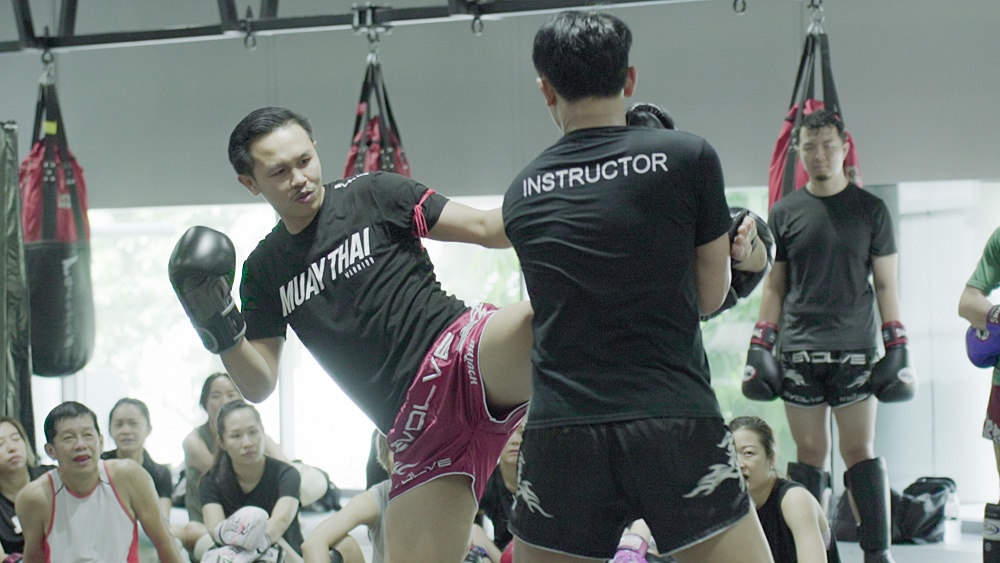So, you’ve taken the plunge and joined a Muay Thai gymnasium. Now that you’re beginning your journey into the artwork of eight limbs, be ready; you aren’t solely going to study new bodily expertise. You’re additionally going to study a complete new language of Muay Thai particular phrases and phrases that may quickly turn into a serious a part of your vocabulary.
If you end up first beginning out, it may be overwhelming. It’s laborious sufficient to recollect the place to step and tips on how to rotate on the ball of your foot each time you kick, not to mention a complete new dictionary of language that you’re solely going to apply when you’re sweating and out of breath.
On this article, we’ve collated 10 of the Muay Thai phrases that you just’re more likely to hear while you first begin coaching in a Muay Thai gymnasium. For those who’re simply beginning out, we suggest memorizing them earlier than your subsequent session so to spend much less time learning linguistics together with your coach and extra time perfecting your roundhouse kick.
1) Teep
As Muay Thai is a sport strongly entwined with its delivery nation, Thailand, numerous Thai language has turn into widespread in Muay Thai gyms all over the world. You’re more likely to hear phrases like ‘khao’ (knee), ‘sok’ (elbow), and ‘mat’ (punch) being utilized by your coaches on occasion however one phrase of Thai origin you might be virtually sure to listen to repeated consistently is ‘teep.’
Teep is the Thai phrase for push-kick and since it’s a lot simpler to say throughout a quick spherical of pads than its multi-syllabic English various, it’s best to commit this time period to reminiscence as quickly as doable.
2) The Pocket
‘The pocket’ is a time period used to explain the world instantly in entrance of a fighter, inside their attain, the place they’ve essentially the most energy and due to this fact their strikes are handiest. For those who and your opponent can simply land photographs on one another with no need to step ahead, then you might be each standing within the pocket.
3) Centerline/Off-Heart
Being on the centerline of your opponent means that you’re standing instantly in entrance of them. You could be on the centerline and within the pocket, which suggests they will hit you. It’s also possible to be on the centerline and out of the pocket which suggests you might be standing too distant to get hit by the fighter reverse you.
If you end up standing at an angle to your opponent in order that they’re instantly in entrance of you, however you aren’t reverse them, that is referred to as being off-center. Being off-center ready the place you may hit your opponent with out them having the ability to hit you is likely one of the most dominant positions in Muay Thai.
For those who hear a coach telling you to go “off-center” both in pads or in sparring, they’re primarily telling you to chop an angle so that you just go away your opponent’s subject of view whereas they continue to be the place you may hit them.
4) Trade
When two fighters commerce strikes throughout a spherical with no break within the motion, it is named an “alternate”. Usually, a fighter is seeking to land extra scoring strikes than their opponent to win the alternate (although touchdown the final strike in an alternate and touchdown extra highly effective strikes do play an element in figuring out the winner). A spherical could be made up of dozens of small exchanges with the winner of the spherical normally being decided by who wins extra of them.
5) Phases

Every alternate in a spherical consists of phases, the place the aggressor assaults, the opponent defends or counterattacks, and the motion continues till one fighter forces a break.
Whereas every spherical is made up of dozens of exchanges, every alternate is made up of phases. These phases are numbered first, second, third, and so forth till there’s a break within the motion that distinguishes the top of a specific alternate.
Primarily, the primary part of an alternate is the opening assault of the aggressive fighter and the primary try the opponent makes to defend in opposition to it. If the aggressor can land a scoring shot within the first part, then their opponent could look to increase the alternate right into a second part the place they’ll try and counterattack. If they can land a scoring shot, then the attacker of the primary part will usually return with a 3rd part assault and so forth till one fighter is certain they’ve outscored their opponent and forces a break to indicate the top of an alternate.
6) Stance (Southpaw/Orthodox)
If you first begin coaching, one of many first questions your coach will ask you is; “are you left or right-handed.” What they’re actually asking you, in layman’s phrases, is ‘What stance are you?’
There are two stances in Muay Thai (not together with the clinch stance) and they’re southpaw and orthodox. A southpaw is a fighter who’s stronger with their left arm and leg whereas an orthodox is somebody who favours their proper aspect. Your coach must know this as your extra highly effective aspect will take the rear place in your Muay Thai stance and decide what strikes you’ll favor.
7) Scoring Approach
A scoring approach is a Muay Thai assault that may at all times rely on the choose’s scorecards while you land it in your opponent, no matter how highly effective or how cleanly executed it’s. In conventional stadium scoring, these embody head and physique roundhouse kicks in addition to knees on to the midsection of your opponent. These strikes could rating greater within the eyes of judges if they’re fantastically executed and have a transparent impact in your opponent however, merely touchdown one in every of these strikes is sufficient to have a constructive impression on the scorecards.
8) Conditionally Scoring Methods
A conditional scoring approach is a strike that should meet sure standards earlier than the judges will think about it a scoring strike. Within the context of conventional, stadium Muay Thai, punches, leg kicks, and even elbows are conditionally scoring. Which means that touchdown one in every of these strikes cleanly in your opponent gained’t earn you factors until it visibly impacts them, akin to knocking them off steadiness.
9) Highway Work
Previously, ‘Highway work’ merely meant working. It’s a time period generally utilized in many fight sports activities akin to boxing and MMA. Previously, working was so central to Muay Thai coaching that it was given its personal time period and when a coach requested, “Are you doing all your highway work?” they actually meant, “Have you ever been working?”
Nowadays different types of steady-state cardio akin to swimming, biking, ski-ergs, rowers, and elliptical trainers have turn into widespread methods for fighters to do their ‘highway work’ whereas sparing their joints from repetitive impression with cement footpaths. So, now when a coach makes use of the time period, they’re referring to any type of lengthy, steady-state cardiovascular train.
10) In Camp
This time period gained’t be very related to your private expertise while you first begin coaching however it is extremely seemingly you’ll hear it usually in case you are in a busy gymnasium.
Being in ‘battle camp’, or just being ‘in camp’ is a time period that refers to a fighter getting ready for a deliberate match within the close to future. Completely different gyms and fighters have completely different expectations on what number of weeks a camp ought to be or what they embody, but it surely’s universally agreed that this time period describes the interval the place a fighter ramps up their dedication to, in addition to the length and depth of their Muay Thai coaching earlier than they battle.
You might also like:
A Nearer Look At Muay Thai In Selling Thailand’s Gentle Energy
















